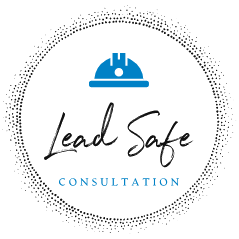In today’s competitive and highly regulated business environment, compliance with international standards is more important than ever. Two of the most prominent standards in the field of safety and environmental management are ISO 45001 and ISO 14001. While both focus on enhancing operational performance and ensuring regulatory compliance, they serve different, albeit complementary, purposes. Understanding the key differences between these two standards—and why your business needs both—is essential to creating a safer, more sustainable workplace.
What is ISO 45001?
ISO 45001 is the international standard for Occupational Health and Safety (OHS). Its primary goal is to provide a framework for organizations to manage the safety and health of their employees, contractors, and visitors in the workplace. It focuses on identifying hazards, assessing risks, and improving overall safety practices. ISO 45001 helps businesses create a structured approach to prevent workplace injuries, accidents, and illnesses, thereby ensuring the health and well-being of everyone involved in the organization.
Key features of ISO 45001 include:
- Risk-based approach to identify hazards and mitigate risks.
- Legal compliance with occupational health and safety regulations.
- Active employee engagement in safety practices.
- Continuous monitoring and improvement of safety performance.
What is ISO 14001?
ISO 14001, on the other hand, focuses on Environmental Management. This standard helps organizations reduce their environmental impact through effective management of resources, waste, and pollution. It enables companies to implement sustainable practices that not only comply with environmental laws but also enhance their reputation as environmentally responsible businesses. ISO 14001 supports businesses in reducing waste, minimizing energy consumption, and fostering a more sustainable future.
Key features of ISO 14001 include:
- Environmental risk management and sustainability initiatives.
- Waste management and reduction strategies.
- Energy efficiency improvements.
- Legal compliance with environmental regulations.
Key Differences Between ISO 45001 and ISO 14001
- Focus Area: Health and Safety vs. Environmental Impact
- ISO 45001 is primarily concerned with creating a safe workplace by identifying, evaluating, and controlling hazards that may affect employees’ health and safety.
- ISO 14001 is focused on managing the environmental aspects of the business, such as reducing waste, minimizing pollution, and conserving natural resources.
- Target Audience: People vs. Environment
- ISO 45001 focuses directly on the well-being of employees and other stakeholders within the organization by ensuring safe working conditions.
- ISO 14001, however, addresses the broader environmental impact, helping businesses minimize their ecological footprint and contribute positively to environmental sustainability.
- Scope of Implementation: Internal vs. External
- ISO 45001 implementation typically addresses internal processes related to workforce safety, ensuring health and safety measures are part of daily operations.
- ISO 14001 covers external factors, such as the impact of the company’s operations on the environment, addressing aspects like waste, emissions, and energy consumption.
- Compliance Requirements
- While both standards aim to ensure compliance with applicable regulations, ISO 45001 focuses on occupational health and safety laws that protect workers, whereas ISO 14001 targets environmental regulations related to pollution control, waste management, and resource efficiency.
Why Your Business Needs Both ISO 45001 and ISO 14001
While ISO 45001 and ISO 14001 have different objectives, the reality is that modern businesses must operate with a holistic view of both employee health and safety and environmental responsibility. Here are a few key reasons why your business should consider integrating both standards:
1. Integrated Management System for Comprehensive Risk Mitigation
- By implementing both ISO 45001 and ISO 14001, you create an integrated management system that addresses both safety and environmental risks. This enables your organization to not only ensure the well-being of your employees but also minimize your environmental impact. A comprehensive approach to risk management is crucial for long-term success and sustainability.
2. Legal and Regulatory Compliance
- Many industries are subject to strict legal regulations regarding both worker safety and environmental protection. Achieving both ISO certifications ensures that your business is fully compliant with these regulations, avoiding costly fines and legal challenges.
3. Enhanced Brand Reputation
- Consumers and stakeholders are increasingly prioritizing sustainability and safety. Holding both ISO 45001 and ISO 14001 certifications demonstrates your organization’s commitment to both employee well-being and environmental responsibility, which can significantly enhance your brand reputation and appeal to socially-conscious clients and partners.
4. Improved Efficiency and Cost Savings
- ISO 45001 helps reduce the costs associated with workplace accidents, injuries, and illnesses. Similarly, ISO 14001 helps minimize waste, reduce energy consumption, and optimize resource use. Together, these standards contribute to better operational efficiency, which can lead to significant cost savings and improved profit margins.
5. A Safer, More Sustainable Workplace
- Integrating both ISO 45001 and ISO 14001 creates a safety culture and a sustainability mindset across the entire organization. This fosters a work environment where employees feel valued and protected, and the company can operate in harmony with the environment.
Conclusion
ISO 45001 and ISO 14001 are both essential standards for businesses that want to thrive in today’s regulatory and competitive landscape. ISO 45001 focuses on creating a safe and healthy workplace, while ISO 14001 ensures that your business operates in an environmentally responsible manner. When implemented together, these standards provide a robust framework for managing both safety and sustainability, driving long-term success and ensuring compliance with legal requirements.
At Lead Safe Consultancy, we specialize in helping organizations implement both ISO 45001 and ISO 14001 to create safer, more sustainable workplaces. Our expert team provides tailored guidance to ensure that your business not only meets regulatory standards but also achieves operational excellence.


Leave a Comment